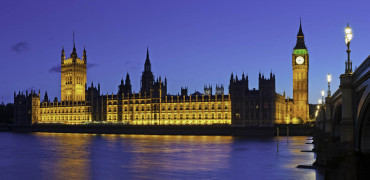In the recent posts I’ve written about how local authorities are progressing on the Road to Net Zero, I’ve tried to include a caveat to explain just how quickly this is all changing.
That means that what has been declared by a council will change over time and could even be different from their stated position a month or so ago.
When we started off our nationwide ‘Road to Net Zero Roadshow’, we tested how much demand there would be with a pilot event in Manchester, which was the first location we looked at in any detail.
We presented our findings in February on how Manchester was approaching Net Zero, and I focused on the ‘Places for Everyone’ document which has been developed by the Greater Manchester Combined Authority (GMCA) and which was submitted to the Secretary of State in the same month.
We were overwhelmed with just how much interest there was in the subject, which is why we planned more events in Bristol, London, Glasgow, Birmingham and Leeds.
It’s also why we are looking at a localised programme around our network of offices as there is still a lot of misunderstanding about Net Zero and carbon reduction.
I draw two major conclusions from this: No-one can work in isolation; Heat is a key area to target
Great plans for Manchester
Places for Everyone is a long-term plan of nine Greater Manchester districts (Bolton, Bury, Manchester, Oldham, Rochdale, Salford, Tameside, Trafford and Wigan) for jobs, new homes, and sustainable growth.
It was published by the GMCA on behalf of the nine districts and submitted to the Secretary of State for Levelling Up, Housing and Communities.
The plan was accompanied with supporting documents, background evidence, and representations received during the final stage of public consultation, which took place from 9 August to 3 October 2021.
At the time of writing, the latest situation is that the GMCA has been notified that the Secretary of State has appointed William Fieldhouse BA(Hons) MA MRTPI, Louise Gibbons BA(Hons) MRTPI and Steven Lee BA(Hons) MA MRTPI to hold an independent examination of the Places for Everyone Joint Development Plan Document.
Informed by residents
The plan is a joint development of the nine districts which will determine the kind of development that takes place in their boroughs, maximising the use of brownfield land and urban spaces while protecting Green Belt land from the risk of unplanned development.
It will also ensure all new developments are sustainably integrated into Greater Manchester’s transport network or supported by new infrastructure.
The plan has been informed by the feedback received from residents, businesses and the development industry to previous consultations and aims to:
- Set out how the nine boroughs should develop up until 2037;
- Identify the amount of new development that will come forward across the 9 districts, in terms of housing, offices, and industry and warehousing, and the main areas in which this will be focused;
- Supports the delivery of key infrastructure, such as transport and utilities;
- Protects the important environmental assets across the city region;
- Allocates sites for employment and housing outside of the existing urban area; and
- Defines a new Green Belt boundary for Greater Manchester
Environmental plan
The work on the Places for Everyone plan has also come off the back of the 5-year environmental plan for Greater Manchester, which looks in greater detail at the potential carbon reduction pathways for the regional authority.
In particular, the plan looked at the scale of the challenge and the sectors where emissions reductions could come from over the next 20-30 years.
At the time of our presentation though, it was clear that Greater Manchester was not currently on track to be carbon neutral by 2038.
In addition, at the time of the report, GMCA had already ‘used’ the following year’s emissions budget and was on course to spend the entire emissions budget to 2100, within the next 6 years.
Low hanging fruit
For me, the report highlights one of the key reasons we started our Road to Net Zero Roadshow, when is states: “Whilst action is required on every source of greenhouse gas emission, we need to prioritise the decarbonization of heat because it is our second biggest source of carbon emissions (after transport).”
For us as a supplier of equipment that is pivotal to a sustainable future, we felt that this statement and the body issuing it, demonstrates the two key lessons to be learnt from an exploration of what authorities such as GMCA and others were saying.
I draw two major conclusions from this:
- No-one can work in isolation.
Local authorities are recognising the limits of what they can achieve themselves and are grouping together to increase the scale, ambition and impact - Heat is a key area for everyone in the UK to target.
Proven technology already exists to help the nation decarbonise heat, whether that is in individual homes, in offices, hotels, schools, hospitals or industry.
So, that’s the end of my brief tour of the UK on the Road to Net Zero and I hope you’ve found these useful and informative.
If you’d like to know more, do please get in touch.
Chris Newman is Zero Carbon Design Team Manager



